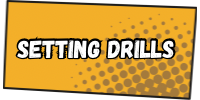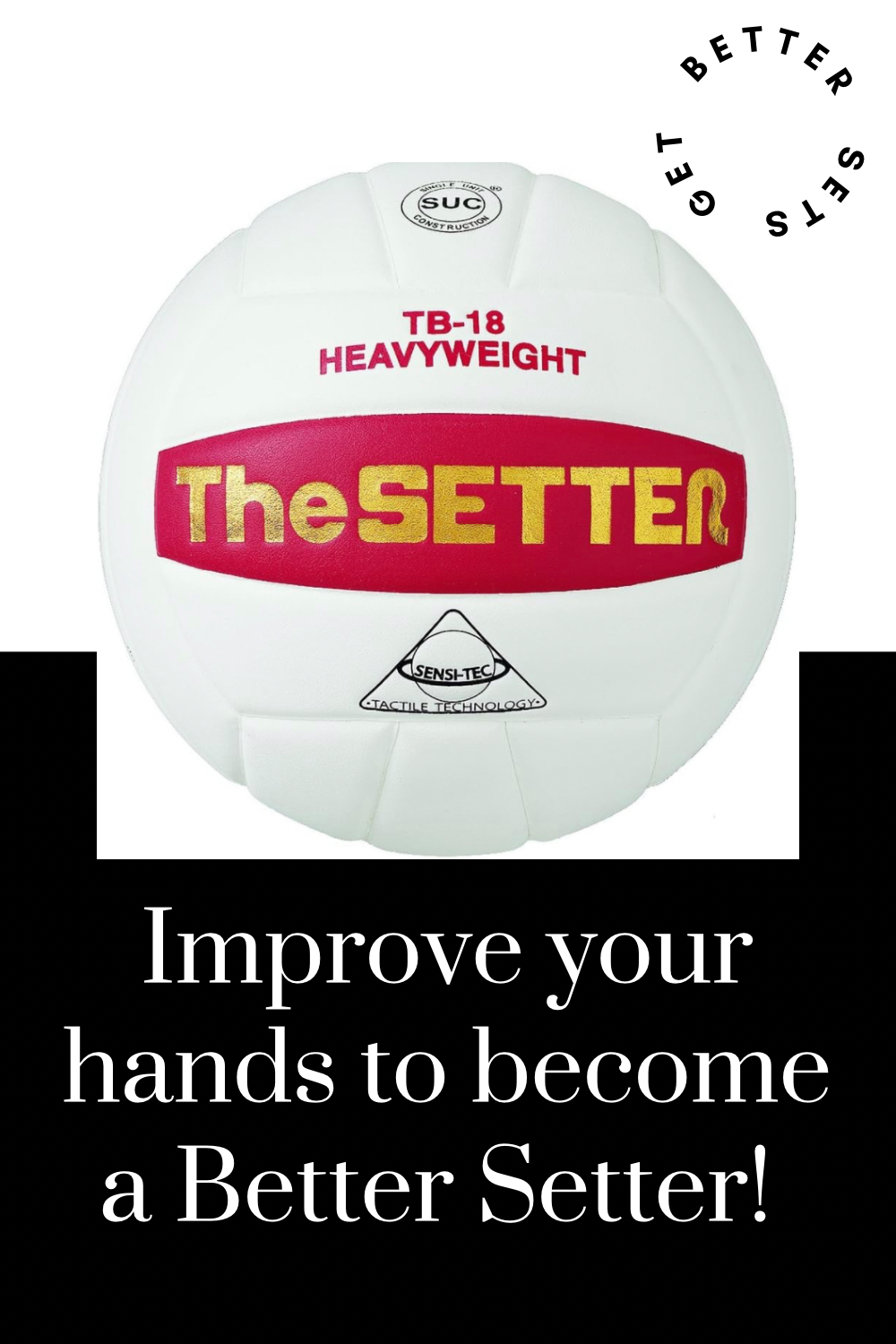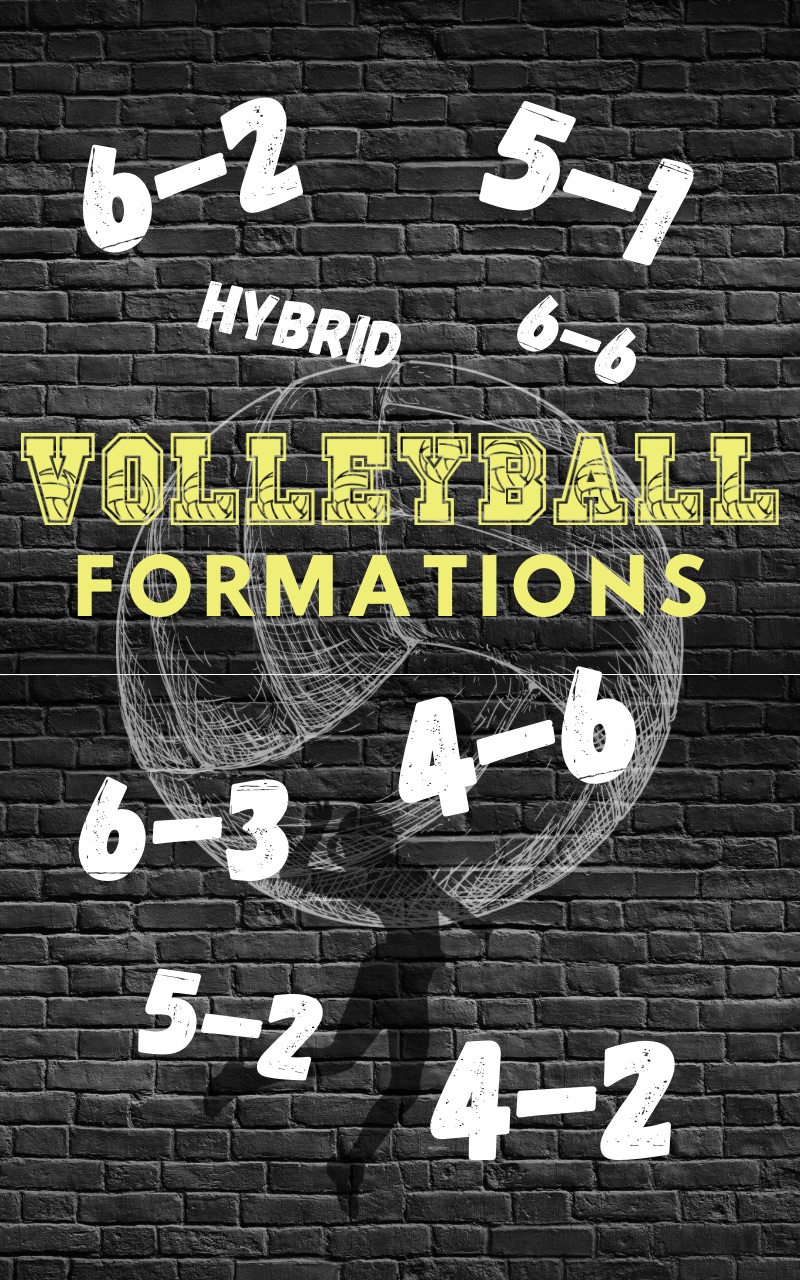
|
[BACK] Tips, Tools, & Drills for Setters | |


 1. Communication is Key: Effective communication with your teammates is vital. As a setter, you should call plays, provide encouragement, and signal for quick sets or high balls. Clear and concise communication can keep the team coordinated and focused. 2. Consistent Hand Placement: Setters need to ensure consistent hand placement while setting. This means using both hands to contact the ball evenly and avoiding any spin on the ball. Moving your feet to the ball right away will help you square your shoulders so that you can evenly make contact with both hands. This consistency helps the hitters anticipate the ball's trajectory, making it easier for them to attack. 3. Perfect Your Timing: Timing is everything in volleyball. Setters must synchronize their movements with the hitters' approach and talk with them. It's crucial to release the ball at the right moment to maximize the hitter's chances of a successful attack. 4. Observe the Blockers: Setters should pay close attention to the opposing team's blockers (block-checking). By analyzing their positioning and timing, you can make split-second decisions about where to set the ball, whether it's to exploit gaps in the block or set up a quick attack. 5. Master Different Types of Sets: Develop a versatile set of skills by mastering various types of sets, including quick sets, high sets, back sets, and more. Being able to deliver different types of sets in different situations will keep the opposition guessing. 6. Work on Footwork: Good footwork is essential for setters to reach the ball quickly and position themselves accurately. Practice moving around the court efficiently, both when receiving the serve and when getting into position to set. 7. Adapt to the Pass: Not all passes are perfect, so setters must be adaptable. Whether the pass is too tight, off target, or over the net, skilled setters can still make a precise set. Be prepared to adjust to the situation. 8. Study the Game: Continuously educate yourself about the game. Watch professional matches, attend clinics, and read books on volleyball strategy. The more you understand the game, the better equipped you'll be to make smart decisions on the court. 9. Stay Calm Under Pressure: Setters often find themselves in high-pressure situations. It's crucial to remain calm and composed. Confidence in your abilities and the ability to make split-second decisions are essential traits of a great setter. 10. Build Chemistry with Hitters: Building a strong rapport with your team's hitters is crucial. Understand their preferences, strengths, and tendencies. Developing chemistry with your teammates will lead to more effective sets and more successful attacks. Conclusion: Volleyball setters are the unsung heroes of the team, guiding the offense and setting up scoring opportunities. By following these tips and putting in the effort to continuously improve their skills, setters can become invaluable assets to their teams and elevate their performance on the volleyball court. |

 Purchase Ebook on Amazon Purchase Ebook on Amazon
|

|
Volleyball techniques Volleyball strategies Volleyball drills Volleyball skills Volleyball fundamentals Volleyball tips Volleyball training Volleyball coaching Volleyball playbook Volleyball exercises Volleyball equipment Volleyball gear Volleyball practice Volleyball coaching tips Volleyball playing tips Volleyball tutorials Volleyball lessons Volleyball techniques for beginners Volleyball skills development Volleyball coaching tools Volleyball teaching aids Volleyball improvement tips Volleyball tactics Volleyball game strategies Volleyball mental preparation Volleyball injury prevention Volleyball nutrition tips Volleyball warm-up routines Volleyball conditioning exercises Volleyball recovery techniques About Us |








